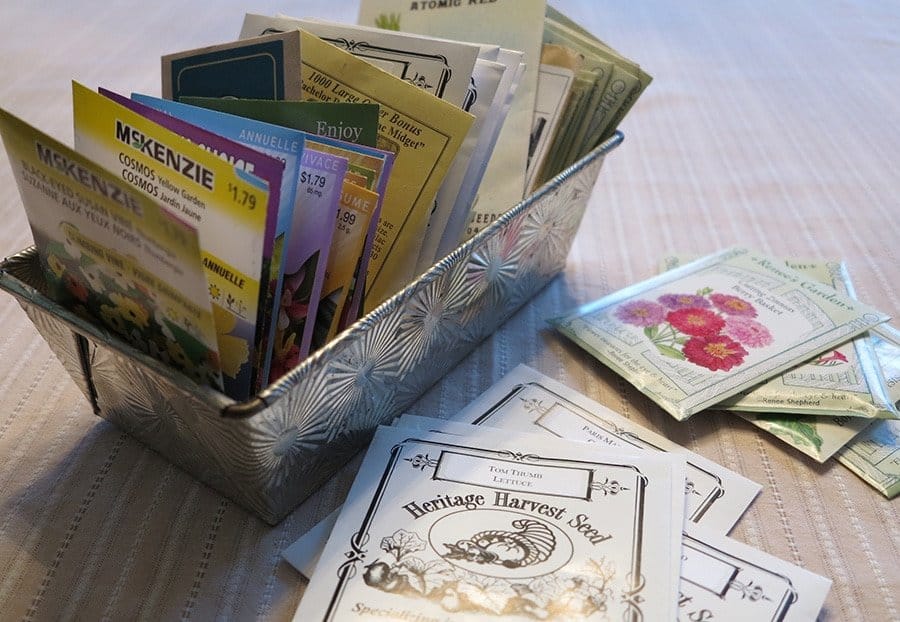
Even though seeds seem suspended in time and are dry enough to rattle around in their envelopes, they contain living tissues, and have a finite number of years to remain viable. The dilemma is, how many years will seeds remain able to germinate, and how to know the percentage of germination to expect in each seed packet.
In basic terms, seeds contain a respirating plant embryo, and a large amount of carbohydrate tissue (the endosperm) to sustain the seed during its dormancy and in the immediate days following germination. It’s imperative that harvested seeds be thoroughly dried before packaging, and suppliers will ensure that the interior moisture is lower than 10 per cent, and preferably only three or four per cent. Purchased seeds are in perfect condition for long-term storage, but how we store them after the pack is opened may shorten their length of viability.
Light, warmth and moisture are what seeds need to germinate, but ironically, those conditions will seriously damage dormant seeds in storage. Keeping seeds cool, dark and dry is critical to preserve their ability to germinate for several years to come. Bright light in a clear glass jar, or humid conditions in a laundry room, or warm air in a kitchen cupboard, are all locations that will shorten the life of seeds. Instead, try storing seeds in a cardboard box, thick paper envelopes or metal cookie tin (with the lid left askew) in a dry, dark basement. Avoid plastic storage boxes or plastic bags, because they can trap humid air inside.
Some of my tomato seeds are five years old, and many other seed packets have even older dates. Are these seeds still viable and will they germinate? Or will I be wasting my time trying to start dead seeds? A simple germination test gives a reasonable indication of seed viability. Very small seeds like fibrous begonias are just too small for this test, but larger seeds that can be easily distributed by hand will be fine.
Take three pieces of paper towels stacked together and spray them with water until thoroughly wet, but not dripping. Put 10 of the seeds to be tested on one half of the paper towel surface, and fold over the top half to cover the seeds. Slip the paper towel bundle into a plastic bag, and let it sit in a warm room for 24 hours. Check to see if the seeds have swelled with moisture, and use a magnifying glass to carefully examine the seed coats, looking for changes in colour and texture. Dead seeds have ceased respiration and most often won’t imbibe moisture. Living seeds take up moisture, and their seed coats will become smooth and deepen in colour.
If six or seven seeds show signs of swelling and colour change, the seeds remaining in the packet probably have good viability. If only two or three of the seeds have taken up moisture, the germination rate from seeds in that package will be poor.
Growing plants from seed is always satisfying, but we sure want to know the little things are going to be viable before going to the trouble of planting them.








